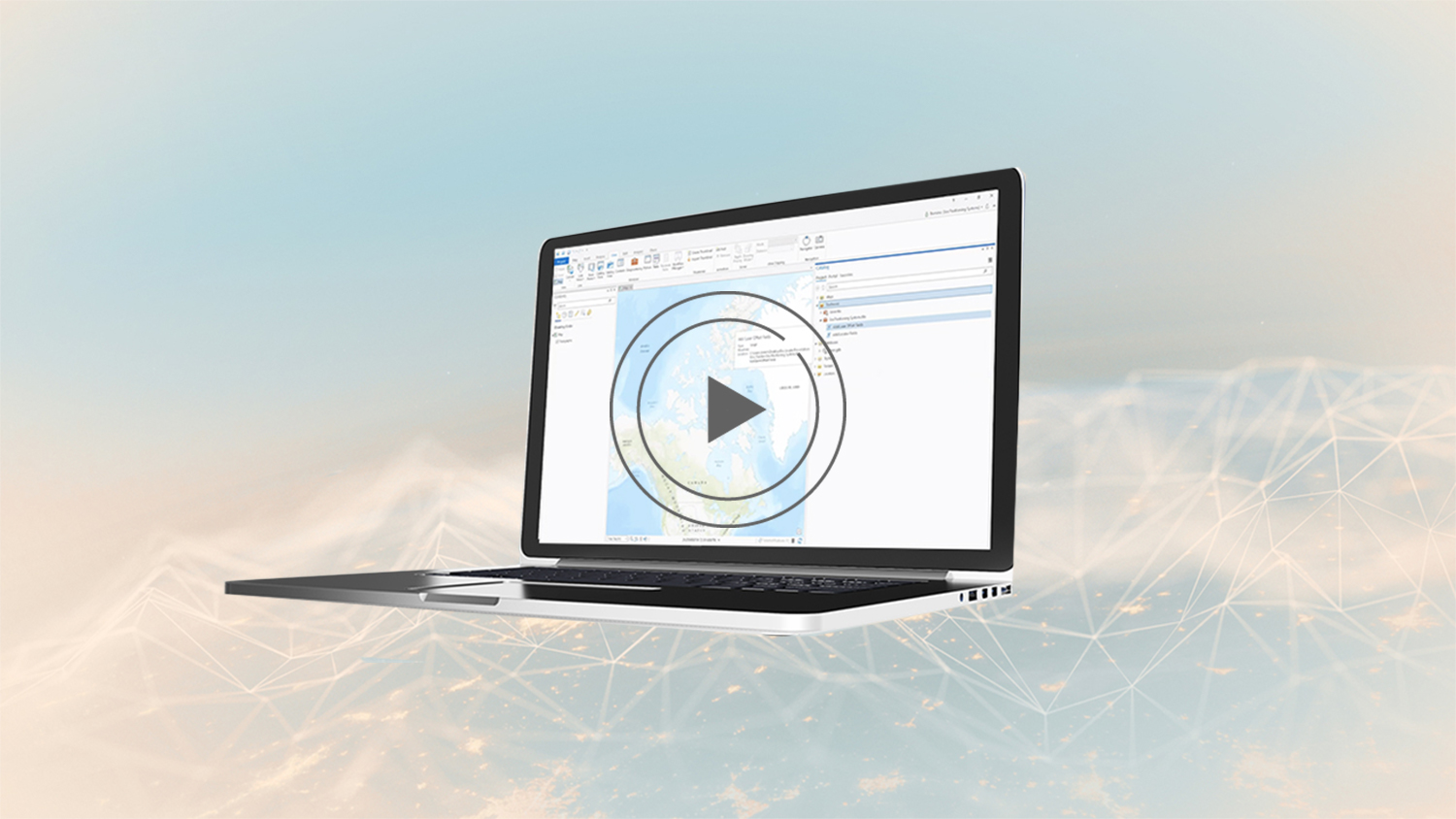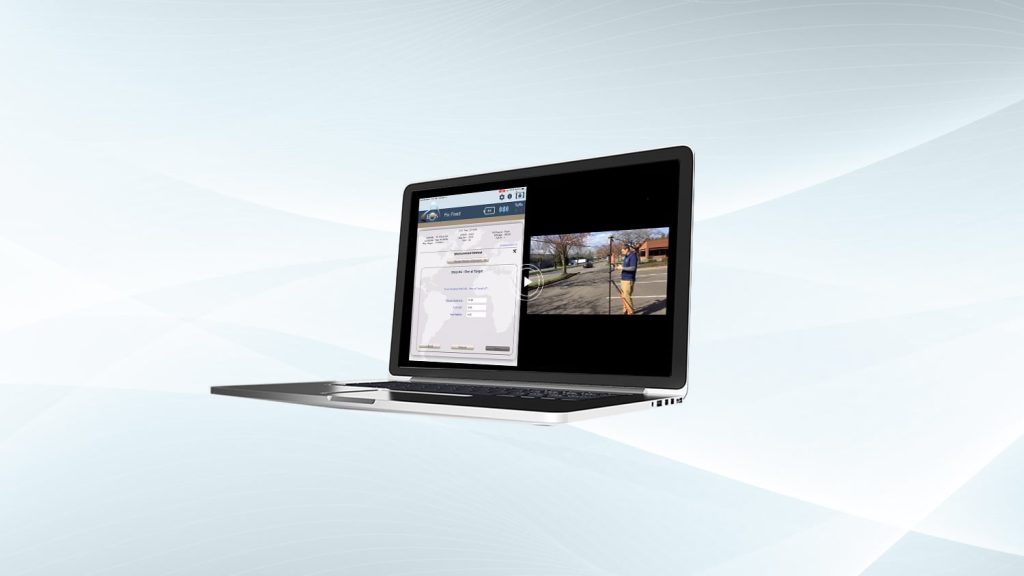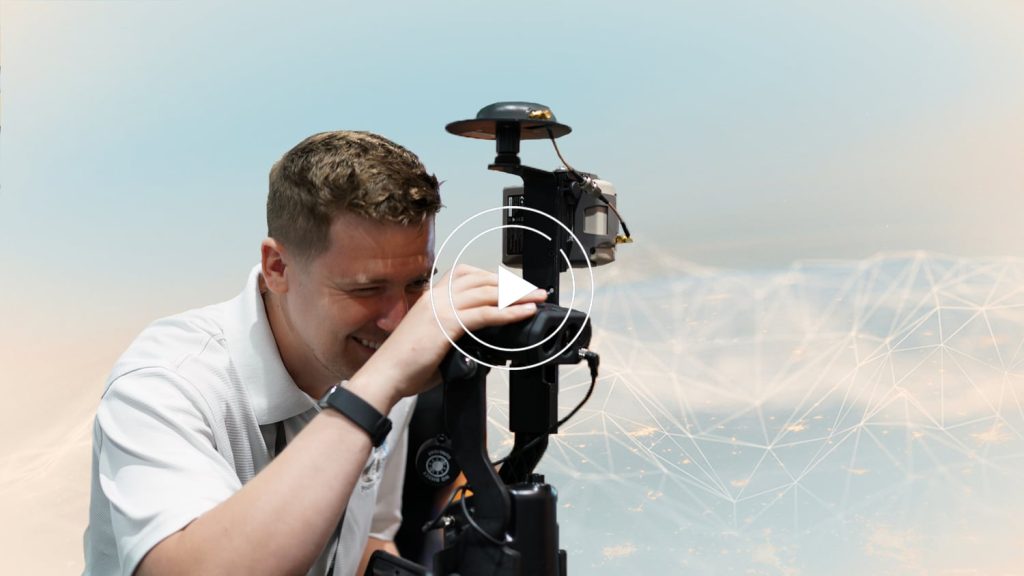Welcome to Eos Laser Mapping™ with ArcGIS Collector!
Synopsis
Here at Eos, we want to equip you with all the tools for success. That’s why we’re releasing a video tutorial series on one of our most popular solutions — Eos Laser Mapping™ with ArcGIS Collector! In this video, you’ll learn how to create your feature layer in ArcGIS Pro and publish your webmap. But first, a quick recap about why laser mapping is a great solution to explore using.
The Eos Laser Mapping™ solution enables field crews to easily, quickly, and safely capture assets location — anywhere. The Eos Laser Mapping solution is for field crews that need to map hard-to-occupy assets without occupying every single point. This is common when assets are located on busy highways, streets, swamplands, dense vegetation, downtown areas, and in other hard-to-reach, unsafe, or GNSS-impaired environments. Field crews are currently using Eos Laser Mapping™ for utilities, municipal, transportation, and environmental application.
This video series will walk you through the steps required to perform your Laser Mapping workflow. This video starts with creating your laser mapping layer in ArcGIS Pro, using the Eos Laser Mapping™ Toolbox, and publishing your web map.
To follow along, you will need the Eos Toolbox.zip file for Eos Laser Mapping™.

Before you start, make sure your ArcGIS Pro software license is up to date, and that you have downloaded the Eos Positioning Systems toolbox .zip file.
Need the Eos toolbox.zip file? Download it here.
Create your feature layer in ArcGIS Pro
Now, open up ArcGIS Pro and log in to your ArcGIS account. Create or Open a New Project. We are going to title our project “Laser.”
Next, click on View and select Catalog Pane. On the Catalog Pane (on the right) select Databases and right click on the database of your map. Select New, then Feature Class to create the feature class that will be used with the Locator metadata.
Now, on the Define page, name your feature class/alias. We will name ours “Laser.” Next, select Point as the Feature Class Type. Make sure to check the ‘’Z-Values’’ box in the Geometric Properties. Click on Next twice.
Now, in the Spatial Reference menu, you will select your horizontal and vertical datum.
For this example, we will set the horizontal datum to WGS 1984 Web Mercator Auxiliary Sphere. Next, we will set our vertical datum to NAVD88 because we are in the United States. Eos Tools Pro will output real-time orthometric heights based on the U.S. GEOID18 model. If you are unsure of which coordinate system/datum to use, be sure to consult with your GIS specialist.
Click Finish. Your feature class is now prepared. Next, you will add GNSS metadata and laser mapping fields to the feature class you just created.
Add GNSS metadata and laser mapping fields
To do this, from the Catalog Pane, right click on Toolbox and select Add Toolbox. This is where you will need the Eos Toolbox for ArcGIS that you downloaded before the tutorial. Browse and select the extracted Eos Positioning Systems.tbx Toolbox. Click OK.
The Eos Positioning Systems.tbx toolbox should now be listed under the Toolboxes menu. Right click on Add Locator Fields and click Open.
In the Geoprocessing Pane, click the file folder icon to generate a popup asking you to select your feature class. Select the point feature class for which you want to populate the metadata, and click Open. Now, once the Geodatabase is opened, select the Laser feature class and click OK.
Click Run to add the metadata to the feature class (point). This process may take a few minutes to complete.
Now, under the Catalog tab, under the Project tab, Database, right click on your layer and select Add To Current Map. Your Point Feature Class now has the GNSS metadata and laser mapping fields.
To verify that this is the case, go into the contents tab. Right click your layer, and hover over Design. Click Fields. Now, you should see all your fields displayed in the table.
Now that you have added fields for GNSS and locator metadata to your feature class, you will publish your web layer.
Publish your web layer
From the Share tab, select Web Layer/Publish Web Layer.
Under the General tab enter the following Item Details: Name, Summary and tags. You can also select which groups you would like to share the web layer with.
Next, tap the Configuration tab and enter the Feature Properties for your layer by pressing the Edit button (pen icon on the right).
Check the following boxes under the Operations property:
-
- Enable editing and allow editors to
- Enable Sync
- Export Data
Next click Publish. To confirm that the layer is successfully published, you should receive this confirmation.
Now, your Web layer has been successfully published. Next, you can move on to creating your web map.
Creating your web map on ArcGIS Online
Log into ArcGIS Online and click Content. If you wish to enable attachments (like photos) to your Feature Class, follow these steps:
First, identify your Feature Layer from the list and click on the three-dot ellipses (‘’…’’) to the right. Now, select View item details.
In the Item Details, click Enable Attachments. Now, select the Map tab at the top of your screen.
Next, click on New Map. On the left side of your screen, click Add and select Search for Layers. Click the plus button to add the layer to your map. Now, select Details and navigate to the Content Pane.
Expand the options by clicking the ellipses (…) and select Configure Pop-up. In the Configure Pop-up section, click Configure Attributes.
Now, in the Configure Attributes pop-up, select all fields that contain Latitude and Longitude values. Set the Format to “8 decimal places” and then click OK.
Do this for every Latitude or Longitude point. For Latitude and Longitude, you will modify 8 total fields, displayed here:
Set to 8 Decimal Places for:
- ESRIGNSS_LATITUDE
- ESRIGNSS_LONGITUDE
- EOSLASER_CTL1_LAT
- EOSLASER_CTL1_LON
- EOSLASER_BS_LAT
- EOSLASER_BS_LON
- EOSLASER_CTL2_LAT
- EOSLASER_CTL2_LON
Still in the Configure Attribute pop-up, select all fields that will contain Altitude values. Set the Format to “3 decimal places” and click OK.
For Altitude, you will also modify 8 total fields, displayed here:
Set to 3 Decimal Places for:
- ESRIGNSS_ALTITUDE
- EOS_ORTHO_HEIGHT
- EOS_UNDULATION
- EOSLASER_GNSSANTH
- EOSLASER_DEVICEH
- EOSLASER_CTL1_ALT
- EOSLASER_BS_ALT
- EOSLASER_CTL2_ALT
When done, go back to the Configure Pop-up pane, and click OK. Now, set your map to the zoom level desired, and click Save Map. Here, you can give your map a title, category, and assigned tags.
Now Share your map with its desired user groups by choosing from the options. Click Done.
To verify that your map is properly published, open ArcGIS Collector on your iOS® device. Browse to the group that you have shared the map with and open the map.
Click on the + button. The newly created Laser layer should be listed.
Nice work! Your web map is now configured.
If you have any additional questions, please contact Eos technical support.



